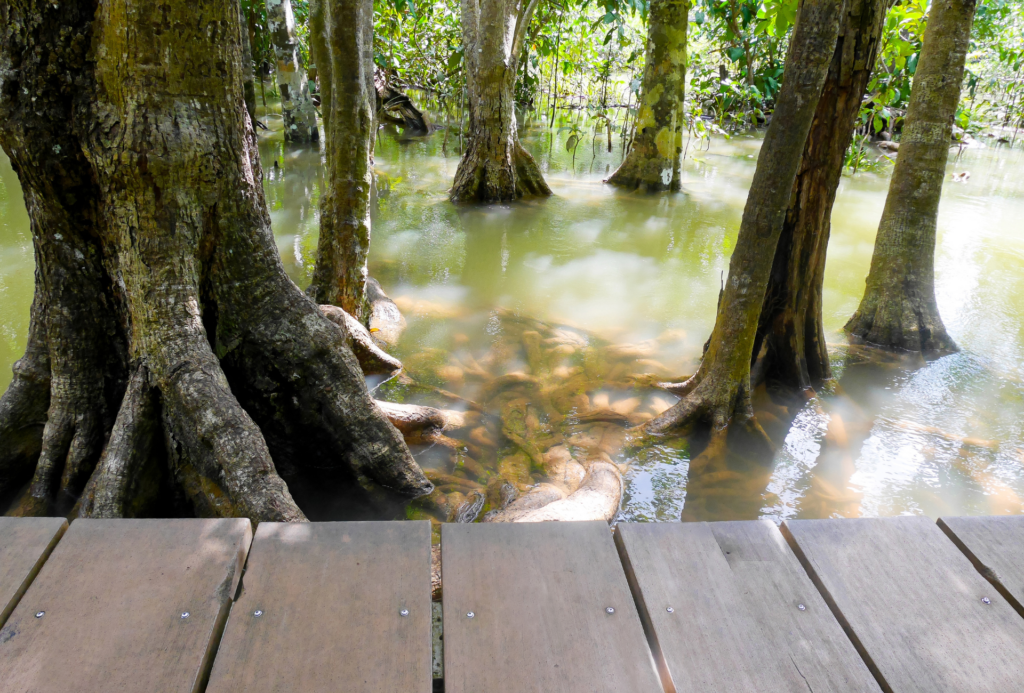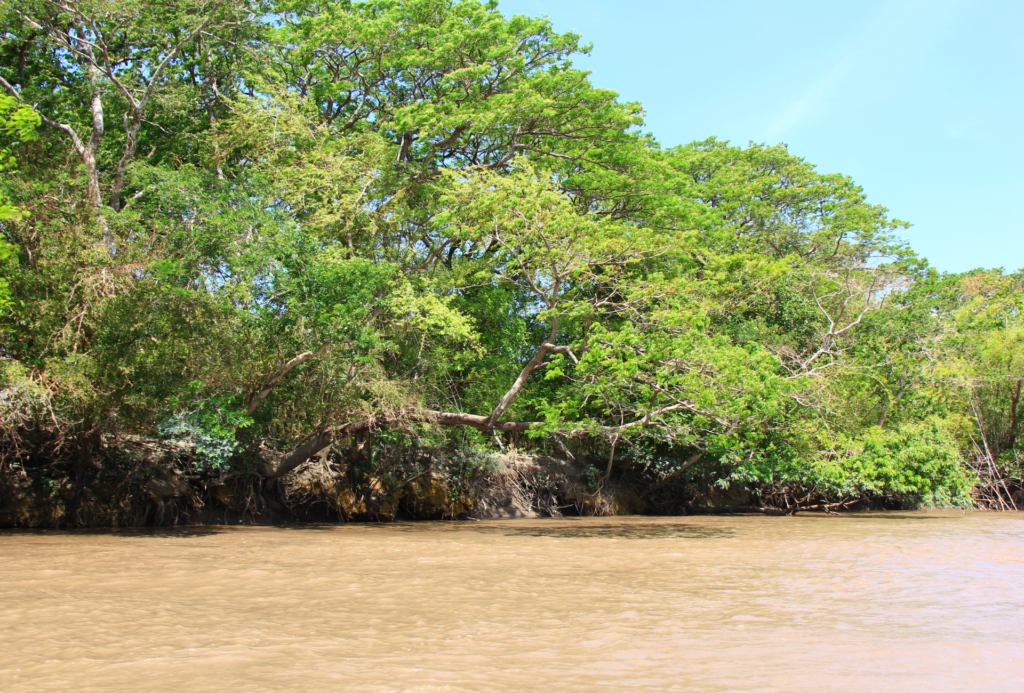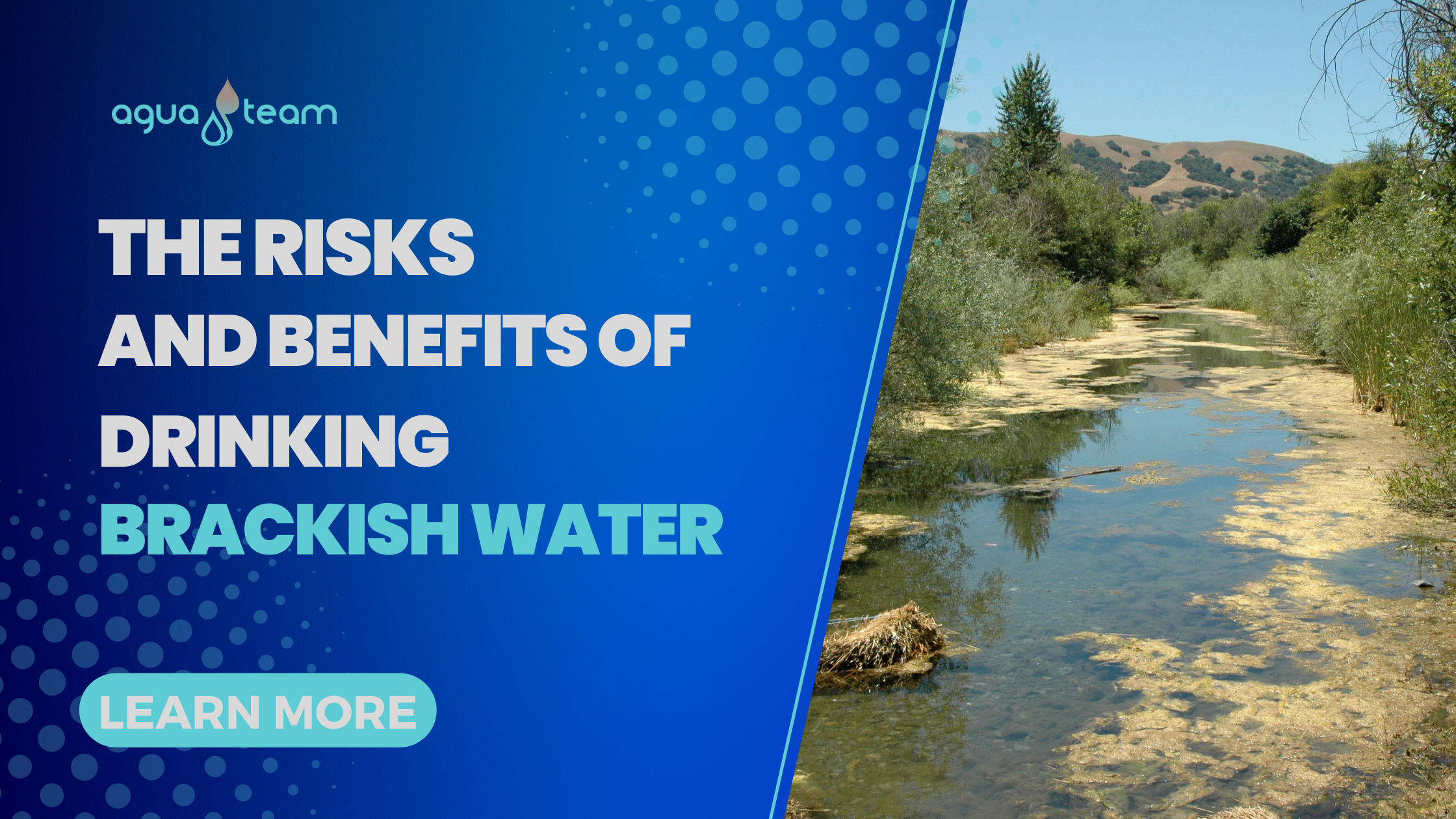
Access to clean and safe drinking water is essential for human health and well-being.
Unfortunately, many regions across the world struggle with water scarcity, particularly in arid and semi-arid regions. In some of these regions, brackish water may be a potential source of drinking water.
Brackish water is a unique type of water that contains more salinity than freshwater but less than seawater. It typically has a salinity level ranging from 0.5 to 30 grams of salt per liter (g/L), whereas freshwater has less than 0.5 g/L of salt, and seawater has around 35 g/L of salt.
For example, in some areas, brackish water may be the only source of water available, making it a crucial resource for human survival. Brackish water may also be an alternative source of water for agricultural, industrial, and domestic use, especially in areas where freshwater resources are scarce.
However, the question remains, is it safe to drink brackish water?
Before we answer, we want to make sure that if there is a water emergency in your area, contact Agua Team. Agua team partners with leading providers in water & wastewater treatment technology to give your company access to affordable water treatment solutions.
Consuming brackish water can pose several health risks, as it may contain harmful contaminants and high levels of salt, which can lead to dehydration, electrolyte imbalances, and other health issues.
In this guide, we will explore the risks and benefits of drinking brackish water, how it differs from freshwater and seawater, the potential health risks associated with consuming it, and ways to make it drinkable.
Additionally, we will examine whether a home desalination system or purchasing bottled desalinated water is the best option for obtaining safe drinking water. So, let’s dive into the world of brackish water and explore its potential as a source of safe drinking water.
What is Brackish Water and How Is it Different From Freshwater & Seawater?

Brackish water is a unique type of water that is found in estuaries, where freshwater rivers meet the ocean. It is also commonly found in aquifers, which are underground water sources that can be tapped for drinking water. Brackish water contains more salt than freshwater but less than seawater, with a salinity level ranging from 0.5 to 30 g/L.
Freshwater, on the other hand, has a very low concentration of salt, with a salinity level of less than 0.5 g/L. Freshwater is typically found in lakes, rivers, and groundwater sources, and is the type of water that is most commonly used for drinking and other household purposes.
Seawater, in contrast, has a much higher concentration of salt than brackish water, with a salinity level of around 35 g/L. Seawater is found in oceans and seas and is not suitable for direct consumption due to its high salt content.
The salinity of the water is determined by the number of dissolved salts in the water, including sodium, chloride, magnesium, and calcium. Brackish water has a higher concentration of these salts than freshwater, but a lower concentration than seawater.
The salinity of brackish water can vary depending on several factors, including the location, the depth of the water source, and the amount of freshwater flowing into the source. In some areas, brackish water may be the only source of water available, making it a crucial resource for human survival.
In the next section, we will explore the potential benefits of drinking brackish water and whether it is safe to consume.
The Benefits of Drinking Brackish Water – Is it Safe to Drink?

The benefits of drinking brackish water are numerous, especially in regions where freshwater resources are limited. Brackish water can provide a valuable source of drinking water and can be used for agricultural and industrial purposes as well.
However, the safety of drinking brackish water is a significant concern. Consuming water with high salinity levels can lead to dehydration, electrolyte imbalances, and other health issues. Additionally, brackish water may contain harmful contaminants such as bacteria, viruses, and heavy metals, which can pose significant health risks if consumed.
Drinking saltwater or brine, which is water with even higher salinity levels than brackish water, can be extremely dangerous and can lead to dehydration and death. The human body requires fresh water to function correctly, and consuming salt water can cause the body to lose more water than it gains, leading to dehydration.
So, can you drink brackish water safely?
The answer is, it depends. While brackish water may be safe to consume in some cases, it is essential to ensure that the water is treated and tested before consumption.
Treating brackish water can involve desalination, a process that removes the salts and other contaminants from the water. There are several methods for desalination, including distillation, reverse osmosis, and electrodialysis. These methods can be costly and require advanced technology, but they can provide safe drinking water.
Another way to make brackish water safe for consumption is to use natural methods such as solar stills or filtration systems. Solar stills use the sun’s energy to evaporate the water, leaving behind salt and other contaminants. Filtration systems use membranes or filters to remove salts and other contaminants from the water.
What are the Health Risks Associated With Consuming Brackish Water?
While brackish water can provide a valuable source of drinking water, consuming it can pose several health risks. These risks are primarily associated with the high salinity levels of the water, which can cause dehydration, electrolyte imbalances, and other health issues.
Drinking brackish water can lead to dehydration because the body loses more water than it gains when consuming water with high salinity levels. This is because the body must use more water to excrete the excess salt, leading to a net loss of water in the body. This can result in symptoms such as dry mouth, thirst, and fatigue.
Electrolyte imbalances can also occur when consuming brackish water, particularly if the water contains high levels of certain ions such as sodium and chloride. These imbalances can lead to symptoms such as muscle cramps, weakness, and confusion.
In addition to these immediate health risks, consuming brackish water can also increase the risk of long-term health issues. For example, high levels of sodium in the diet have been linked to an increased risk of high blood pressure, heart disease, and stroke.
Furthermore, brackish water may contain harmful contaminants such as bacteria, viruses, and heavy metals. Consuming water with these contaminants can lead to a range of health issues, including gastrointestinal illnesses, neurological damage, and cancer.
How Can You Make Brackish Water Drinkable?

There are several ways to make brackish water drinkable. The most common method is desalination, which involves removing the salts and other contaminants from the water. However, desalination can be costly and requires advanced technology.
Fortunately, there are also natural methods that can be used to make brackish water safe for consumption.
One natural method of desalination is solar stills, which use the sun’s energy to evaporate the water, leaving behind salt and other contaminants. Solar stills can be made using a plastic bottle and a few simple materials. To make a solar still, cut off the bottom of a plastic bottle and bury it in the ground. Place a container in the center of the bottle and fill it with brackish water.
Cover the bottle with plastic wrap and place a weight in the center to create a cone shape. The sun’s energy will evaporate the water, which will condense on the plastic wrap and drip into the container, leaving the salt and other contaminants behind.
Another natural method of making brackish water drinkable is filtration. Filtration systems use membranes or filters to remove salts and other contaminants from the water. These systems can be simple or complex, depending on the level of filtration required.
For example, a basic filtration system can be made using a cloth or coffee filter to remove large particles and sediment from the water. A more complex system might use a reverse osmosis membrane to remove salts and other contaminants from the water.
Chemical treatments can also be used to make brackish water drinkable. One common treatment is adding chlorine or iodine to the water to kill bacteria and other pathogens. However, these treatments can leave a residual taste in the water and may not remove all contaminants.
Should You Use a Home Desalination System or Buy Bottled Desalinated Water Instead?
When it comes to making brackish water drinkable, you may be wondering whether to use a home desalination system or purchase bottled desalinated water. Both options have their pros and cons, and the decision ultimately depends on your individual needs and circumstances.
Home desalination systems can be expensive to purchase and maintain, but they provide a reliable source of clean drinking water in areas where freshwater resources are limited.
These systems can range from simple filtration systems to more advanced reverse osmosis systems. They require an initial investment but can be cost-effective in the long run, especially for households that rely heavily on water for cooking, drinking, and cleaning.
On the other hand, bottled desalinated water is convenient and readily available at most grocery stores. However, it can be expensive and creates plastic waste. Additionally, bottled water may not be as cost-effective in the long run for households that require a large volume of water.
When considering whether to use a home desalination system or purchase bottled desalinated water, it is important to weigh the costs and benefits of each option. Home desalination systems may be more cost-effective in the long run, but require an initial investment and ongoing maintenance.
Bottled desalinated water is convenient, but can be expensive and contribute to plastic waste. Ultimately, the decision depends on your individual needs, budget, and environmental priorities.

